2017 NBA Mock Draft: Best Fit For Every Team

Prioritizing fit over talent in the draft is usually a bad idea. Franchises should aim to select the best players available, regardless of which position they’ll fill. Mind you, this is not a hard-and-fast rule. There could be a rookie who so convincingly demonstrates his potential at, say, point guard, that it doesn’t make much sense to take a PG in the lottery the following year (absent of a trade). But those cases are rare. The best course for most franchises is to take the guy listed highest on their board and figure out the rest later.
This mock is taking a different approach. It seeks to match franchises with players who best meet their on-court needs. Talent and upside are still hugely important, but don’t expect rigid alignment with our Big Board, which ranks the class’s top 50 prospects based on film evaluation and statistics. Picks will be made with an eye towards roster construction and positional strengths and weaknesses. Other, more nebulous factors, like franchise culture and location, may be considered for certain choices as well.
With the draft less than a week away, The Crossover hereby presents its best-fit mock.
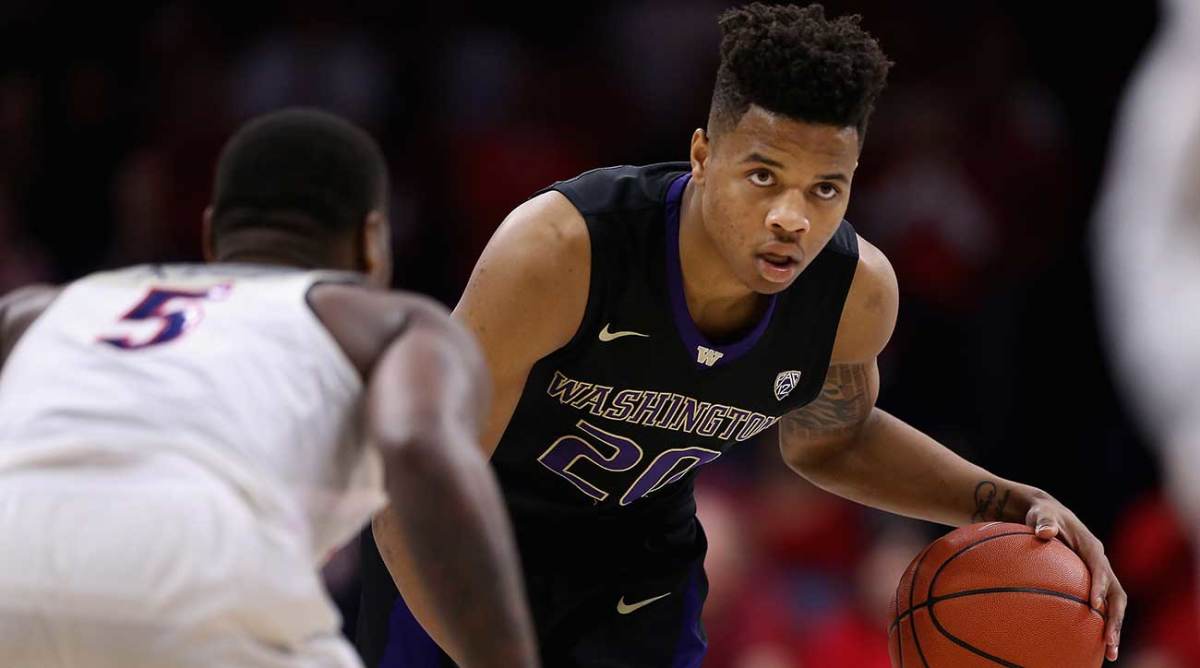
1. Boston Celtics: Markelle Fultz, PG, Washington | Freshman
This is an obvious case where the best player matches the best fit. Fultz is the clear-cut top prospect in this class and, arguably just as important for Boston, his selection would not compromise the Celtics’ team-building flexibility in any way. Fultz looks like All-Star who could help Boston mount another run to the Eastern Conference finals as early as next season. Or he could be a foundational piece for a rebuild that positions the Celtics to peak closer to the end of LeBron James’s prime.
2. Los Angeles Lakers: De’Aaron Fox, PG, Kentucky | Freshman
The answer is yes: Lonzo Ball was a serious contender for this spot. But his fit in Los Angeles is more about off-the-court considerations. As much as Lavar Ball would object to this scenario, and as thrilling as it would be to watch his son race up and down the floor and sling no-look passes alongside D’Angelo Russell in some reincarnation of the Showtime Lakers, that backcourt couldn’t cut it defensively against the Western Conference’s top units. Fox can’t shoot, but his stroke isn’t broken, and whatever value he detracts from Los Angeles’s offense early in his career, he’ll compensate for it by relentlessly harrying opposing guards.
Who Wants To Bet On De'Aaron Fox?
3. Philadelphia 76ers: Lauri Markkanen, PF, Arizona | Freshman
It might take a couple of years before Markkanen is ready to log heavy minutes in the playoffs (a not-unrealistic goal for the Sixers in 2018, provided Ben Simmons is as good as advertised), but they shouldn’t pass up the opportunity to take one of the best shooting big men prospects in recent memory. The 7-footer drained 42.3% of his 163 three-point attempts and 83.5% of his free throws with the Wildcats last season. Philadelphia already has a frontcourt pillar to build around in Joel Embiid, and Markkanen would complement him effectively by spreading the floor with his deep range while Embiid covers for his defensive flaws.
4. Phoenix Suns: Josh Jackson, SF, Kansas | Freshman
The Suns may be tempted to pull the trigger on a point guard here. At 27 years old, Eric Bledsoe doesn’t jibe with their team-building timeline, and Tyler Ulis probably projects as a backup. The prospect of plucking a doggedly competitive wing with major positional versatility here should override that temptation, though. Jackson can pitch in right away as a lockdown artist and secondary playmaker, and while the J will need to be ironed out over time, it’s not a fatal shortcoming. A perimeter tandem comprising the sweet-shooting Devin Booker and Jackson is a solid base Phoenix can use to plot out the next steps in its (long) path toward Western Conference relevancy.
5. Sacramento Kings: Lonzo Ball, PG, UCLA | Freshman
Ball would get to stay in California, just not in the city he, nor his outspoken father, had hoped. The rationale for this choice flies in the face of the aforementioned reason the Lakers didn’t take the Chino Hills, Calif., native at No. 2. Yes, coaches would lick their chops at the possibility of running Ball and Buddy Hield through a parade of ball screens and off-ball cuts, but the Kings shouldn’t fret too much over the possibility of shaky backcourt resistance. Ball and Hield could grow into one of the most entertaining guard partnerships in the league, a titillating union of fastbreak-fueling feeds, playmaking pizzaz and long-range launching. Here’s guessing majority owner Vivek Ranadive would be all in.
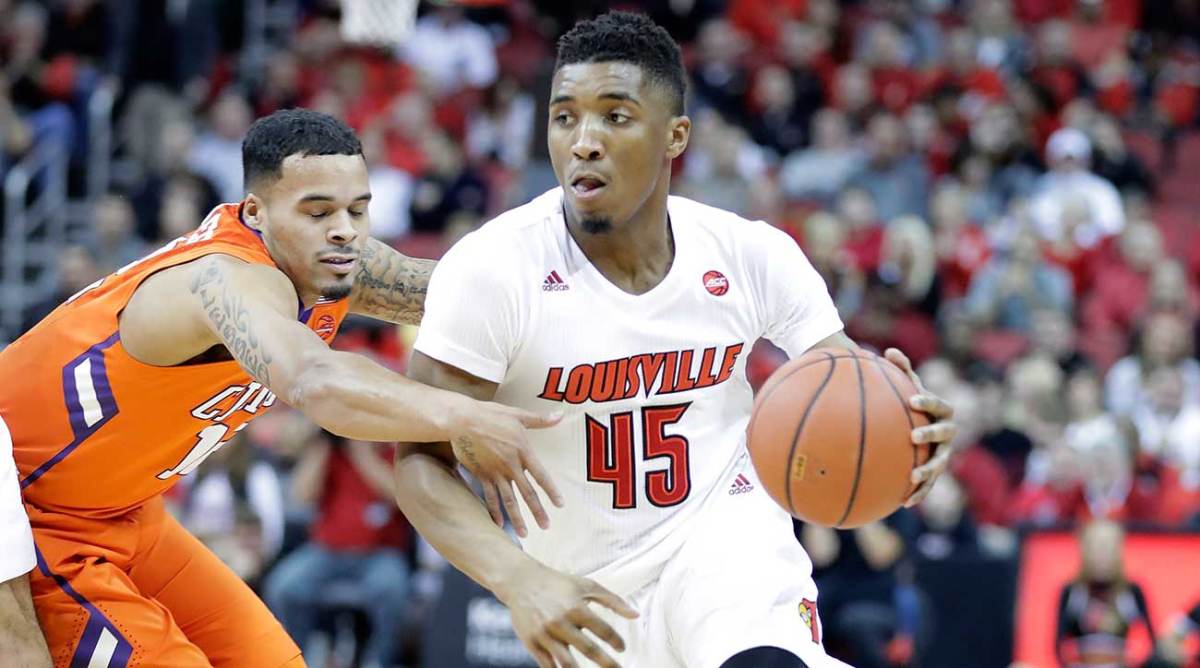
6. Orlando Magic: Donovan Mitchell, SG, Louisville | Sophomore
The Elfrid Payton experiment should continue… for now. He hasn’t developed into the sort of top-notch floor general Orlando was looking for when it acquired him in a draft-night trade with Philadelphia in 2014, but Payton, who’s eligible to sign a contract extension this summer, performed well enough after the All-Star break in 2017 to at least earn a season to prove his worth to a new front office. Taking Mitchell here would enable general manager John Hammond to simultaneously keep tabs on Payton’s progress and groom his possible replacement. Mitchell is listed above as a shooting guard, but he’s flashed lead-ballhandler potential and, with a 6’10’’ wingspan, offers the versatility to mark opposing guards and wings.
7. Minnesota Timberwolves: Jonathan Isaac, PF, Florida State | Freshman
A Karl-Anthony Towns-Isaac frontcourt pairing feels like something close to a perfect counter to the small-ball configurations around the league today. Towns is only 21, but he’s already cemented his reputation as one of the best big men on the planet, and Isaac could help paper over his deficiencies by protecting the rim and neutering screen-and-roll actions. Contrary to (mostly unreasonable) preseason expectations entering 2016-17, the Timberwolves didn’t morph into a defensive juggernaut overnight after hiring Tom Thibodeau. That probably won’t happen next season, either, whomever they select at No. 7. But Isaac would definitely accelerate their progress on that end.
8. New York Knicks: Dennis Smith, PG, NC State | Freshman
The Knicks should use this summer to hit the reset button, forgoing win-now trades and signings in favor of forward-thinking moves to surround center Kristaps Porzingis with young talent. That means moving on from Derrick Rose and refraining from acquiring another veteran point guard, like Jrue Holiday or Ricky Rubio. Instead, they can nab their PG of the future in Smith, whose ability to manufacture offense off the dribble and top-tier athleticism have gone under-appreciated amid the tidal wave of hype generated by other prospects at his position, like Fultz, Fox and Ball.
9. Dallas Mavericks: Jayson Tatum, SF, Duke | Freshman
The Mavericks aren’t that far away: They recovered from a rocky start last season to make a run at the No. 8 seed in the West. The next best point guard prospect in this class, French product Frank Ntilikina, can’t be expected to run a playoff team right away. Rather than taking a flier on a project, Dallas can swipe a top-level shot creator with defensive upside at a time when so many teams are at pains to fill out their perimeter rotations with quality 3-and-D pieces. Apprehension about Tatum’s compatibility with Harrison Barnes and Wesley Matthews would be misguided; all of them can slide up and down the lineup.
10. Sacramento Kings: Justin Jackson, SF, North Carolina | Junior
The Kings would be set at point guard with Ball, and Hield is a keeper at the 2, even if, contrary to Vivek’s lofty vision, he’s not the next Steph Curry. Sacramento also has loaded up on young centers; whether or not Skal Labissiere, Willie Cauley-Stein, Georgios Papagiannis, or some combination thereof, can fill the void left by Demarcus Cousins, the Kings should spend another season evaluating them, rather than crowding that position even more. That leaves the 3 and 4 spots, where the Kings could use a floor-spacer with the length, if not the strength, to check both stretch fours and wings. Jackson fits the bill.
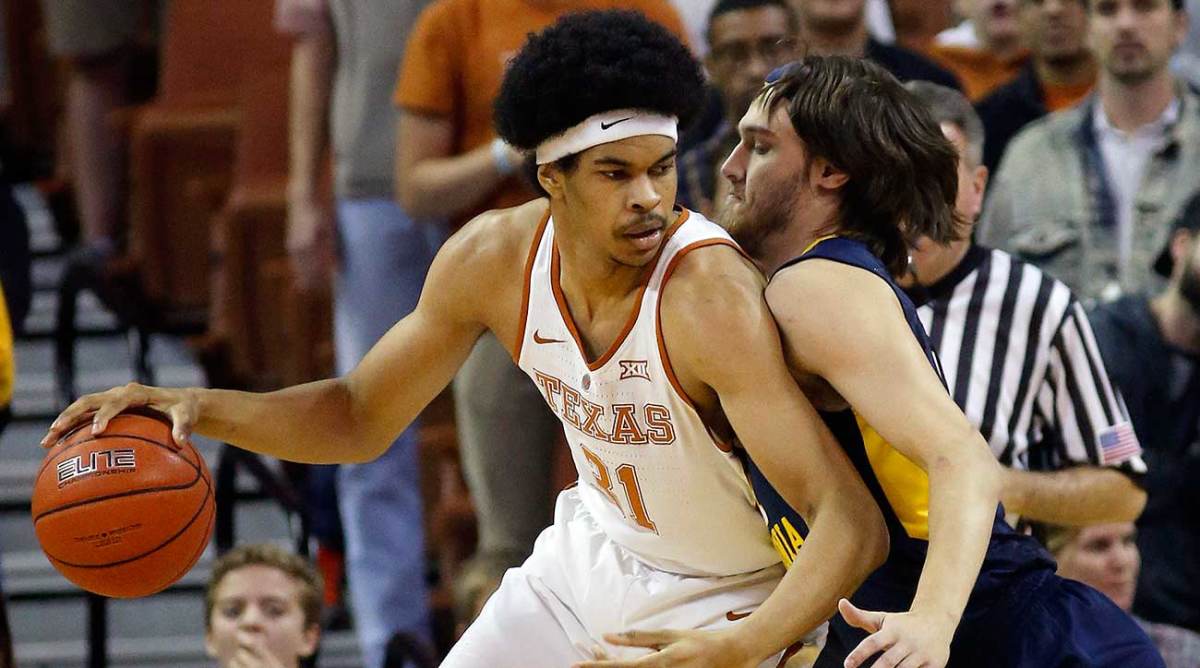
11. Charlotte Hornets: Jarrett Allen, C, Texas | Freshman
Allen’s best-case scenario involves him becoming a drive-deterring, shot-blocking force who can anchor the back line of a team’s defense and flash to the rim for pick-and-roll finishes. His physical tools (6’11’’, 7’5’’ wingspan, 9’1’’ standing reach) suggest he could get there at some point, but the start of Allen’s pro career could get rough as he tries to acclimate to the physicality of the NBA game. With Cody Zeller and Frank Kaminsky both logging major minutes, the Hornets aren’t pressed for immediate help at center, which diminishes the urgency to get him up to speed quickly. Steve Clifford’s defensive acumen would ease Allen’s transition.
12. Detroit Pistons: Frank Ntilikina, PG, France | Age: 18
If the Pistons were committed to Reggie Jackson as their point guard of the future, they wouldn’t have shopped him at the trade deadline last season. Whatever Stan Van Gundy’s feelings on the 27-year-old, Jackson doesn’t seem long for Detroit. Ntilikina could be Jackson’s successor. That he’s probably not equipped for a significant workload right away shouldn’t give Van Gundy pause, even if he elects to move Jackson. Veteran Ish Smith is still around on a cheap deal ($18 million over three years) to tide the Pistons over while Ntilikina, who’s still only 18, gets his sea legs.
13. Denver Nuggets: O.G. Anunoby, F, Indiana | Sophomore
Anunoby didn’t make the offensive strides scouts were looking for during his sophomore season at Indiana, and the knee injury that cut short that season could set him back as a rookie. But the possibility of him blossoming into a rangy, super-switchable cover man should entice Denver as it forges ahead with center Nikola Jokic as its roster linchpin. Jokic is a gifted playmaker and scorer, but absent a defensive difference-maker alongside him, Denver risks topping out as a middle-of-the-pack playoff team that needs to win games in the 130s. Anunoby could give the Nuggets a malleable cog with an All-Defense ceiling.
2017 NBA Mock Draft 5.0: All Eyes On Lonzo And The Lakers
14. Miami Heat: Malik Monk, SG, Kentucky | Freshman
Monk probably won’t fall this far on draft night. Some squad is bound to snag him in the top 10; the disquiet over passing on an offensive supernova, irrespective of whether he’s a snug fit, will be too much to endure. But if he’s still available at No. 14, the Heat should hightail it to the Barclays Center stage. There may not be a better shooter in this class than Monk, and Miami has the pieces to mitigate his frailties on the other side of the court. Even if unrestricted free agents James Johnson and Dion Waiters bolt Miami for big paydays this summer, the Heat should have defensive stud Justise Winslow back at full strength after he missed most of last season with a shoulder injury.
15. Portland Trail Blazers: Ike Anigbogu, C, UCLA | Freshman
Portland could look to package this pick, one of three it has in the first round, with a contract as part of a cap-space-clearing move. If they keep the pick, however, the Blazers can take a chance on a rim-protector with a limited track record but plenty of room to grow. Anigbogu played only 13 minutes per game for the Bruins last season, yet he would have rated out as one of the top shot blockers in the power conferences if he met the playing time threshold. Though Portland struck gold with the February deal that netted center Jusuf Nurkic, the Blazers’ defense, which ranked No. 21 in efficiency last season, remains too porous to support a deep playoff run. Anigbogu would help.
16. Chicago Bulls: Harry Giles, C, Duke | Freshman
Taking Giles here would be a prudent move whatever course the Bulls chart over the next couple of seasons. A series of knee injuries and a curtailed season at Duke following an October procedure pushed Giles down draft boards, but if he even comes close to regaining the form that once made him the top prospect in high school basketball, Chicago could be getting a top-three talent outside the lottery.
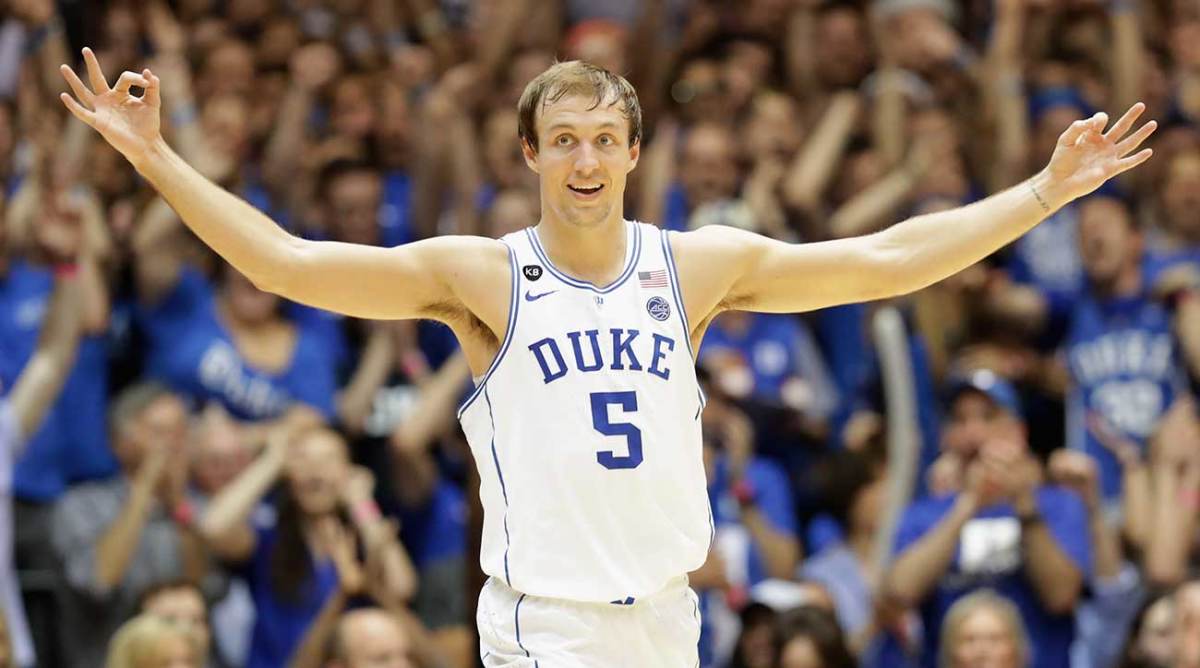
17. Milwaukee Bucks: Luke Kennard, SG, Duke | Sophomore
The Bucks have all the trappings of a post-LeBron Eastern Conference juggernaut: A no-doubt-about-it superstar (Giannis Antetokounmpo), a high-level two-way wing (Khris Middleton), a proven bucket-getter (Jabari Parker, though a second ACL tear is concerning) and promising youngsters at center (Thon Maker) and point guard (Malcolm Brogdon). Let’s add a knockdown shooter to the mix. Kennard definitely checks that box, having connected on 38.2% of his threes and 86.7% of his free throws over two seasons at Duke, and he could provide additional value as a secondary ball-handler. His below-average physical tools and defensive vulnerability wouldn’t be disqualifying for a Milwaukee team armed with an armada of long-limbed stoppers.
18. Indiana Pacers: T.J. Leaf, PF, UCLA | Freshman
The Paul George situation should sort itself one way or another over the next year or so. While the Pacers debate their future, they couldn't go wrong by snatching a sweet-shooting big man to slot next to center Myles Turner. If Turner profiles as Indiana’s defensive backbone, Leaf can be a floor-spreading marksman who lessens his offensive burden. An infusion of young backcourt talent would also make sense for the Pacers, particularly if new president of basketball operations Kevin Pritchard doesn’t plan on re-signing Jeff Teague this summer, but Leaf is a better choice given the prospects left on the board.
19. Atlanta Hawks: Zach Collins, C, Gonzaga | Freshman
This selection smacks the steal-fit sweetspot: Not only does Collins address a positional need considering the forthcoming free agencies of Paul Millsap, Kris Humphries and Mike Muscala (to say nothing of veteran center Dwight Howard’s expressed unhappiness with his playing time), the Hawks would be adding him toward the back end of the first round, 10 spots below his placement on our Big Board. Collins’s first-round buzz really picked up steam during Gonzaga’s run to the national championship game this spring, but neither his rapid rise, nor his inability to consistently stay out of foul trouble, should spook new general manager Travis Schlenk.
2017 NBA Draft Sleepers: Six Guards To Watch
20. Portland Trail Blazers: Terrance Ferguson, SG, Australia | Age: 19
Assuming, like at No. 15, that Portland actually uses this pick, it would have a hard time resisting a high-upside prospect with top-shelf athleticism. Ferguson underwhelmed in his lone season with the Adelaide 36ers of the National Basketball League. (He averaged just 4.6 points in 15.2 minutes per game and sank only 31.4% of his three-point attempts.) And he doesn’t come with the likelihood of a major instant impact, but if you squint hard enough, the outlines of a 3-and-D starter are there. The Blazers’ stuffed perimeter corps would enable them to avoid rushing Ferguson into more than he can handle. There just aren’t a ton of minutes to go around in Portland for a raw teenager right now.
21. Oklahoma City Thunder: Semi Ojeleye, F, SMU | Junior
Oklahoma City’s search for a small forward who can both shoot and play defense will continue into free agency. Ojeleye can offer the same traits at the 4 and also move down a position if need be. His imposing blend of strength, athleticism, defensive range and ability to drain long-range jump shots (he hit 42.4% of his 172 three-point attempts and 78.5% of his free throws last season at SMU) would add some positional flexibility to a Russ-oriented formula that fell flat against a second-rate West contender (the Houston Rockets) in this season’s playoffs. Ojeleye’s age (22) probably wouldn’t halt a Thunder club aiming to win big now.
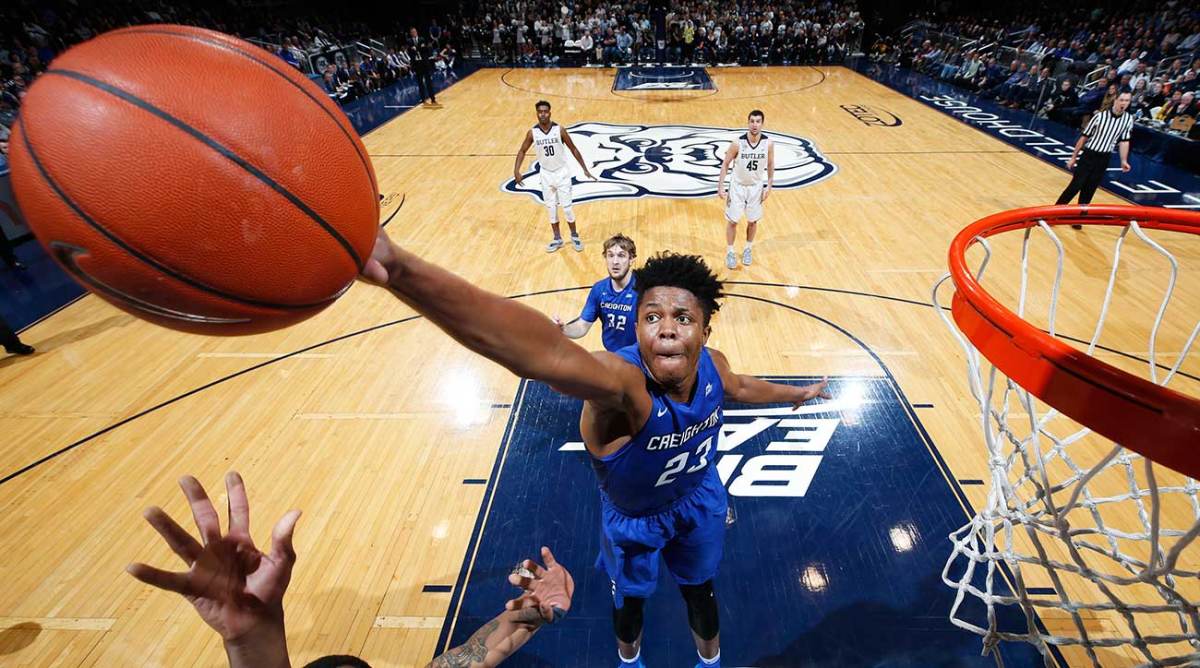
22. Brooklyn Nets: Justin Patton, C, Creighton | Freshman
Brooklyn is destined to spend the next couple of seasons, at minimum, toiling at the bottom of the Eastern Conference standings (it doesn’t control its first-round pick until 2019.) Patton won’t make the Nets more competitive right away, but he could be molded into a productive two-way big man by the time they’re ready to make a push for the postseason. Also, there could be a lot of playing time available for Patton by his second year—Brook Lopez hits unrestricted free agency in 2018, and the Nets could opt to trade him before then.
23. Toronto Raptors: Bam Adebayo, C, Kentucky | Freshman
Sure, Toronto took a center in the first round of last year’s draft in Utah product Jakob Poeltl, but grabbing Adebayo here would provide some stability at the position in advance of an important summer for the Raptors’ frontcourt. Serge Ibaka and Patrick Patterson will be unrestricted free agents, and Toronto ought to at least do its due diligence on potential trade packages for Jonas Valanciunas. Adebayo does most of his work offensively from close range; over one season at Kentucky, he attempted zero threes and 63.7% of his shots came at the rim, according to hoop-math.com. Yet he’s worth taking a chance on as a high-energy defender and rebounder.
24. Utah Jazz: John Collins, PF, Wake Forest | Sophomore
The four-year, $102 million contract Utah reached with Rudy Gobert last October amounted to a statement of intent: The Jazz see the Stifle Tower as a frontcourt bedrock. Who’ll run alongside Gobert over the next few years is less clear, though backup Jeff Withey enters unrestricted free agency this summer and both Derrick Favors and Boris Diaw become UFAs next summer. The Jazz can open their checkbook to keep one or more of those guys, but Collins would be a cost-controlled alternative that Utah can lean on for low-block scoring and glass-cleaning on both ends of the floor. Gobert’s presence would offset some of his defensive warts.
25. Orlando Magic: Tyler Lydon, F, Syracuse | Sophomore
The biggest problem facing John Hammond? Most of his team’s players just can’t shoot. Last season the Magic ranked No. 25 in the league in three-pointers made per 100 possessions and No. 29 in True Shooting Percentage. Lydon wouldn’t be a cure-all for Orlando’s bricklaying, but he could alleviate the issue by infusing its frontcourt with some floor-spacing ability; he drilled 40% of his three-point attempts and 81% of his free throws over two seasons with the Orange. Lydon would be an effective partner for bruising big man Bismack Biyombo in certain lineups (even if Biyombo underperformed during his first season in Orlando) and he might make trading Nikola Vucevic a more palatable option.
26. Portland Trail Blazers: Frank Jackson, G, Duke | Freshman
If Portland plans on keeping guards Damian Lillard and C.J. McCollum together long-term, this isn’t a favorable situation playing-time-wise for Jackson. But the lack of a major minutes load early on isn’t necessarily a bad thing for his development. With Lillard and McCollum anchoring the backcourt, the Blazers can bring Jackson along slowly while he sands off some of the rougher edges of his game (like poor shot selection and erratic defensive effort). Portland lavished Allen Crabbe and Evan Turner with massive contracts last summer, but there’s room there for an athletic third guard on a cheap deal who can play the 1 and the 2.
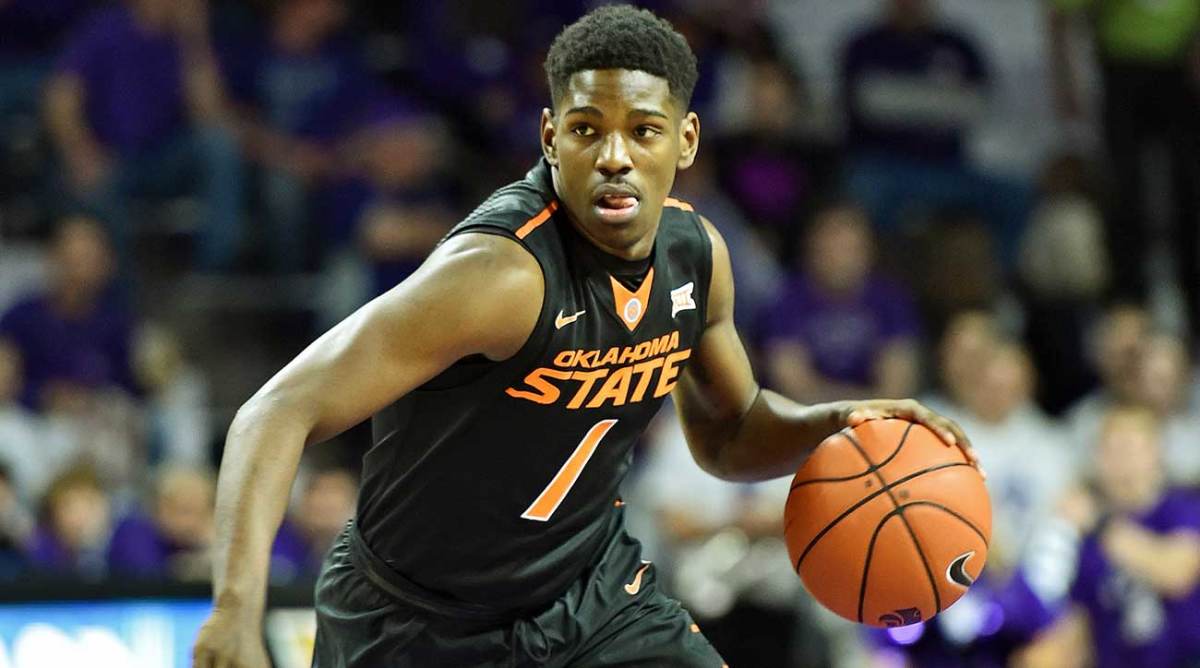
27. Brooklyn Nets: Jawun Evans, PG, Oklahoma State | Sophomore
In a draft stocked with point guard headliners, Evans could be a gem who slips under teams’ radars. Evans is short (6’1’’), but he makes up for it with a 6’5’’ wingspan. He’s a tenacious defender, excels attacking the basket and drawing fouls (he led the Big 12 with 6.6 fouls drawn per 40 minutes during conference play) and could be a smooth pick-and-roll operator in head coach Kenny Atkinson’s system. There’s a chance he’d get a lot of run early in his career, too, given starter Jeremy Lin’s injury history.
28. Los Angeles Lakers: Kyle Kuzma, PF, Utah | Junior
Kuzma really helped himself at the draft combine last month. His performance may not be enough to bump him into the first round, but the Lakers scored in a big way when they used the No. 27 pick in 2015 on a power forward with intriguing complementary skills (Wyoming’s Larry Nance Jr.). Nance’s success and Julius Randle’s eligibility for a contract extension need not be serious considerations in making this choice. If Kuzma can improve his three-point range and defense, he could excel as low-usage, back-of-the-rotation filler, and nothing more.
NBA Draft: Two Intriguing (But Flawed) Sleepers
29. San Antonio Spurs: Jordan Bell, PF, Oregon | Junior
The Spurs sought to upgrade their frontcourt defense last summer by signing a 27-year-old center, Dewayne Dedmon, to a short-term deal. (Dedmon will be a free agent this summer after reportedly declining his player option.) A year later, they can draft a younger, defense-first big who has the makings of a more potent weapon against high-octane scoring engines. Bell is a productive shot-blocker and rebounder, a capable finisher around the basket, and he’s got the wheels to roam out to the perimeter and switch onto wings and guards. Basically, Bell does just about everything a team would need to prevail in a seven-game series against the Warriors.
30. Utah Jazz: Derrick White, G, Colorado | Senior
The composition of Utah’s backcourt could change drastically before the start of next season. Both George Hill and Shelvin Mack are unrestricted free agents, and it might be too soon to hand over the keys to 2014 first-round pick Dante Exum, who’s still just 21. White could operate alongside Exum (or Hill or someone the Jazz sign to replace him) as an off-ball playmaker and shooter; alternatively, he could pick up reserve minutes at the 1. Either way, White’s advanced scoring repertoire would perk up a Utah offense that’s a cut below the league’s best units whether or not Hill and/or Gordon Hayward leave town this summer.
